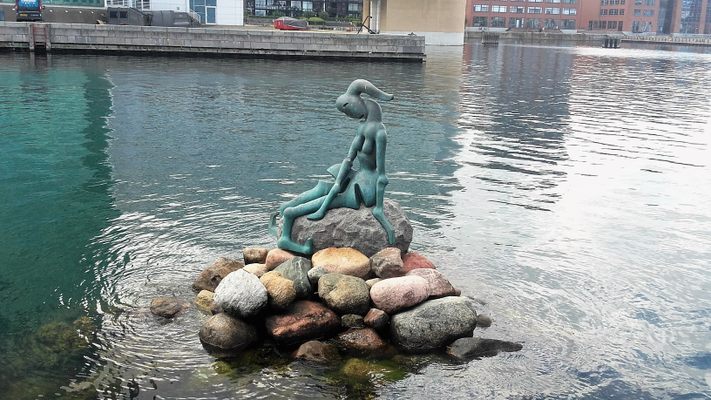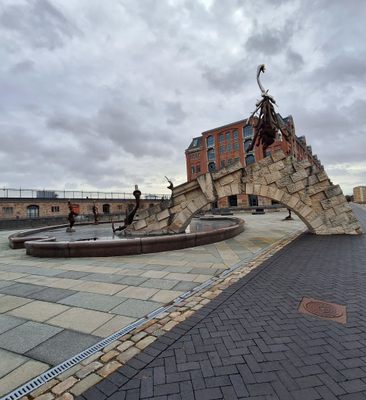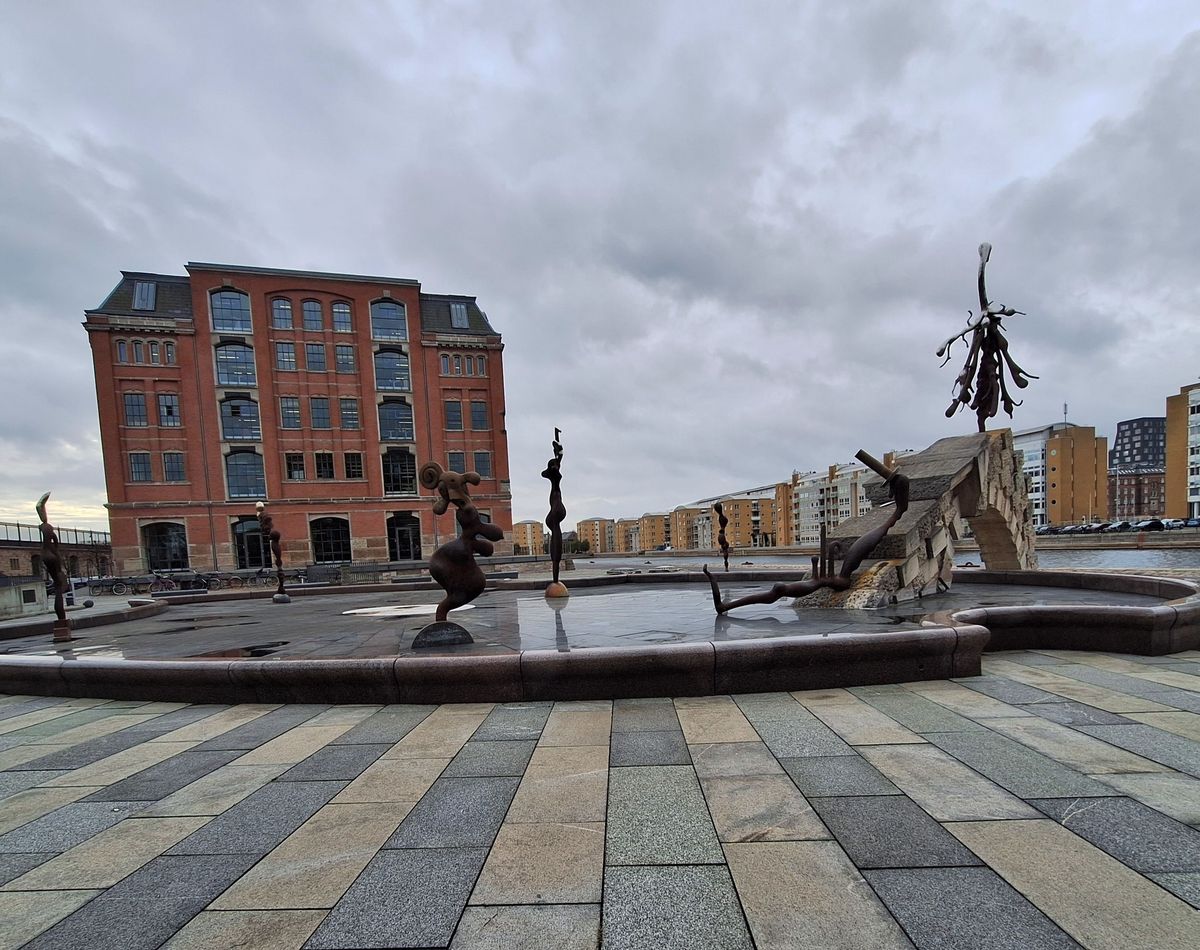About
Danish-Icelandic sculptor Edvard Eriksen’s "Little Mermaid" is one of Denmark’s most visited tourist attractions. The bronze statue, based on Hans Christian Andersen’s fairy tale of the same name, is as iconic to Copenhagen as the Statue of Liberty is to New York City. But it’s been a popular target for vandals over the years—she’s lost her head, twice. It’s an unfortunate state of affairs considering its origin: Brewer/philanthropist Carl Jacobsen commissioned the statue after being moved by a ballet production of the fairy tale. Bjørn Nørgaard’s Mermaid, on the other hand...
In 2006, not quite 100 years after Eriksen’s iconic mermaid was introduced, Bjørn Nørgaard, a professor at the Royal Danish Academy of Fine Arts, created "The Genetically Altered Paradise." A news release described the piece as "a provocative and humorous look at postmodern society." Located a quarter of a mile from the beloved tourist attraction are contorted, abstract sculptures of Adam, Eve, Mary Magdalene, Christ, a pregnant man, and “The Genetically Modified Little Mermaid.”
This mermaid is also bronze and sits in a position similar to Eriksen’s, but her twisted figure, with elongated skeletal legs and an unrecognizable head, is a criticism of genetic alterations. The mermaid has avoided vandalism so far. Maybe it’s because, as Nørgaard says, she’s already “fighting against the order of nature”; any further modification would be superfluous.
The statues, originally shown at the Danish pavilion at the Expo 2000 World's Fair in Hanover, Germany, circle a sandstone arch topped with a 15-foot Madonna statue. They’re only a 10-minute walk from Erikson’s mermaid and, for those interested, offer a sobering alternative to his romanticism.
Related Tags
Know Before You Go
Not on the main river side, a little up further north from the famous Little Mermaid.
Community Contributors
Added By
Published
August 10, 2017



































































